Vancouver Island’s northern-most show garden, Ronning’s Garden
Our longest excursion of the trip was the plan for Day 27, May 22nd. Cape Scott is the furthest northwest point on Vancouver Island, and while we wouldn’t get that far, we’d get close. And on the way, we’d visit Ronning’s Garden, a unique historical attraction. I’m breaking the day up into 2 posts, as Ronning’s Garden and San Josef Bay are each worthy of that many photos.
Sunrise from the motorhome at 05:24.

As we got ready to leave at 09:20, a heavy fog bank was laying behind Malcolm Island, where most of the ship traffic goes. I didn’t think that was any indication of what conditions would be like on the west coast but wasn’t certain.

Northbound at Km 365 of the Island Highway, BC Highway 19, at 09:40.

We decided to stop at Port Hardy for some road snacks. I couldn’t help but notice the security at The Source electronics store. It’s rare to see that sort of thing in small towns, especially rather remote ones. I wonder if it’s actually a reflection of Port Hardy, or just of the store owner?
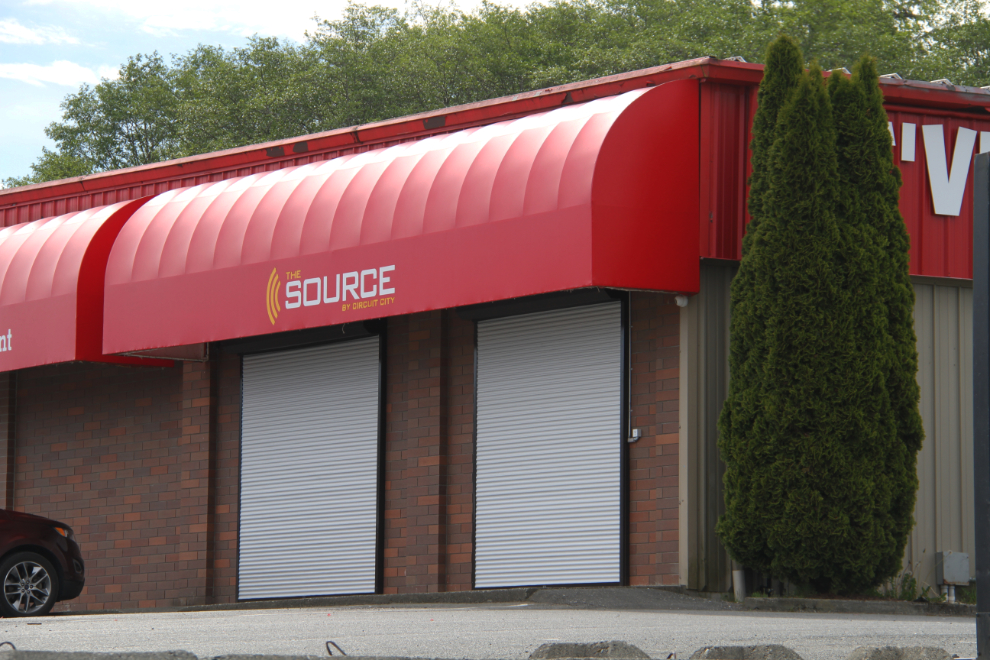
While the girls went shopping, I studied the map. I’d really like to get to Cape Scott, but while you can hike there and back in one very long day, it’s not possible this time. The thought of just getting close was exciting.

Did someone say “road snacks”? Bella’s in! 🙂
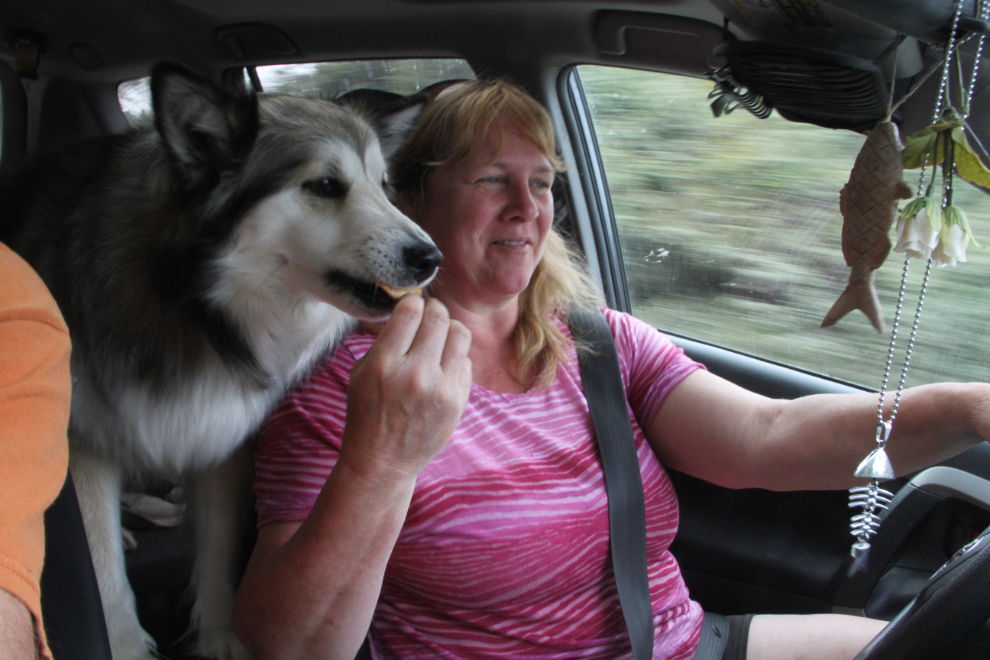
At 10:30, we reached “the shoe tree”. Hundreds of pairs of hiking boots, runners, crocs, flip-flops, and pretty much every other sort of footwear has been attached to or piled around this tree in the middle of nowhere along the Holberg Road.


Being a gravel road, the condition of the Holberg Road varies by the hour. For us, it was a rough bugger due to the recent wet weather. Luckily there was almost no other traffic or the dust would have been bad as well. The minivan crossing the single-lane bridge in the next photo pulled over as soon as we got close.
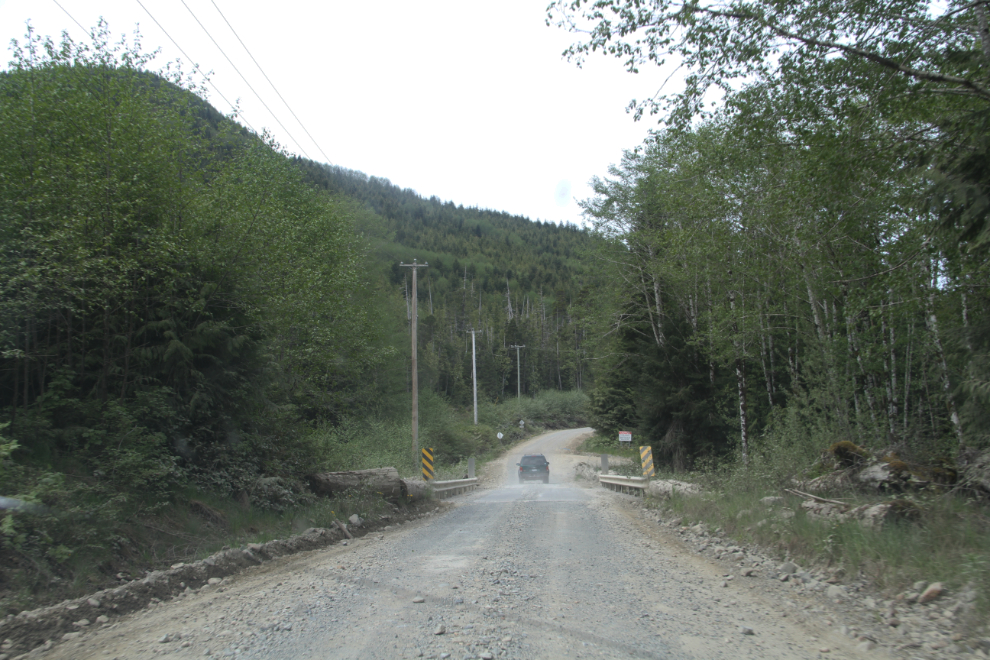
“Be Prepared For The Unexpected”, with a huge log on top of a crushed car.

“Watch out for soft shoulders, blind corners, steep grades, graders, loaded log trucks, heavy equipment. Good Luck.” You’ve been warned 🙂

All the roads past Port Hardy are active logging roads, and log trucks get the right of way. And I really like photographing them. This Western Star with a crane to self-load is a beauty.

It’s nice to get confirmation of where you are every now and then. Without signs at important junctions, making a wrong turn in this maze of roads wouldn’t be too difficult. The signs are installed by the main forest company in the region, Western Forest Products, not by the BC Highways Department.

We did a tour of Holberg, which includes this row of logging company homes. Holberg has the feel of being a community made up mostly of men.

I like seeing signs saying when a given area was logged, replanted, thinned, etc. This sign on the left had a type of information that I’d never seen before: “Hurricane 1906. New Forest 1908.”

At 11:35, we reached the turnoff to Ronning’s Garden.
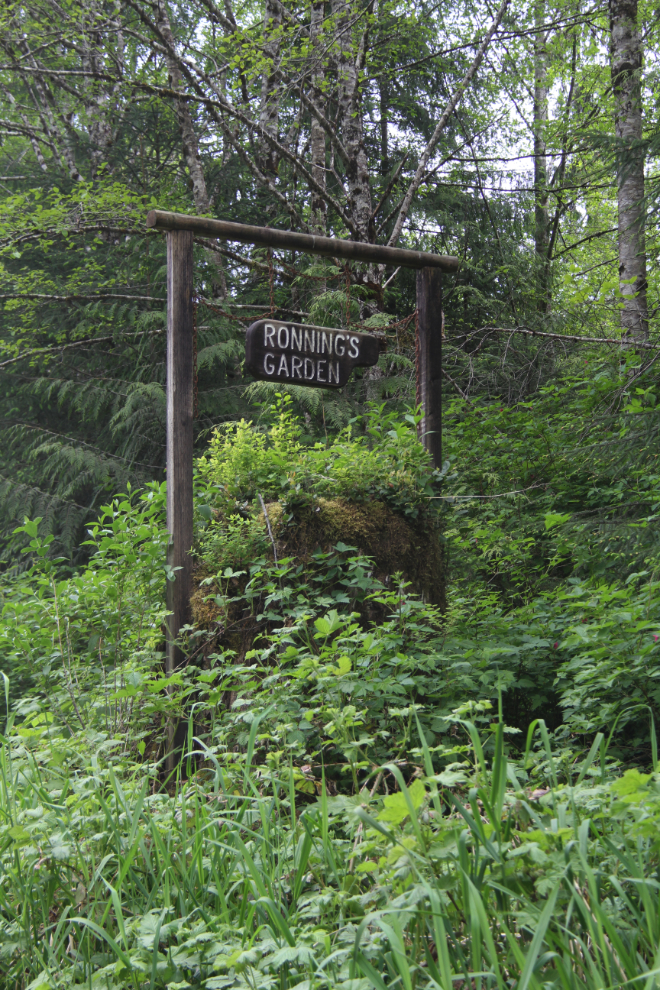
There were 2 other vehicles in the small parking lot when we arrived, but the people from them were just returning from the garden, so it looked like we’d have the place to ourselves. The sign says “Ronning’s Garden, 1/2 mile. Please walk.” The rocks and post make that decision fairly easy 🙂

The 1/2-mile walk to the garden is lovely, through a dense second-growth forest on the old San Josef Wagon Road. The wagon road had been promised to settlers out at Cape Scott, but was never completed – this seems to be a common story on the North Island.

Bella and Tucker were constantly distracted by enticing, unfamiliar smells and sights.

Any opening in the forest that allows sunlight to reach the ground results in a profusion of ferns, grasses, and wildflowers of many types. And we hadn’t even reached Ronning’s Garden yet!

Ten minutes after leaving the car, we reached the first sign that we were on the edge on Ronning’s Garden – some small Monkey Puzzle Trees. From a handout that Bobbie had picked up on a previous visit, we knew that Monkey Puzzle Trees were an important part of the story.

At the entrance to the garden proper, we met Julia Moe. She and her husband Ron have been working on restoring and tending Ronning’s Garden for 37 years now, and she was happy to take a break and tell us the story. In 1910, Bernt Ronning established a homestead near the end of the San Josef Wagon Road. As he slowly went about the daunting task of clearing the rainforest, he ordered seeds and cuttings from around the world. While some of the seeds and cuttings were for practical purposes, many were just for fun. Over the years, his home and garden became a popular stop along the road. Upstairs, Bernt had a pump organ, and had planed the hand-sawn floor for dancing. Most settlers abandoned the region, but Bernt remained into the 1960s, working as a trapper, fisherman, and camp cook. In the mid 1960s, though, health forced him to move to Victoria. Mother Nature quickly started taking back the Ronning homestead, and within a decade the gardens had all but disappeared. Julia says that most of the hundreds of varieties of flowers in terraced beds were lost. Knowledge of the variety and depth of the Ronning garden is still expanding, with expert foresters and botanists occasionally coming by to offer Julia and Ron help.

“The Bernt Ronning Garden. Welcome.” Enhanced now by talking to Julia, the vibe here, as well as the sights and smells, was wonderful.

The garden’s best-known residents were a male/female pair of Monkey Puzzle Trees (Araucaria auracana) from Chile that flanked the entrance to the homestead. They were one of the few pairs in North America that produced viable seeds, and their offspring have been grown all over the world. The female died about 25 years ago, and the remaining tree is one of the largest and oldest Monkey Puzzle Trees in BC now.

Monkey Puzzle Trees were very popular in the early 1900s and I’ve seen many in Victoria, Vancouver, and New Westminster in particular, but I’m sure that I’ve never seen one even close to this size.
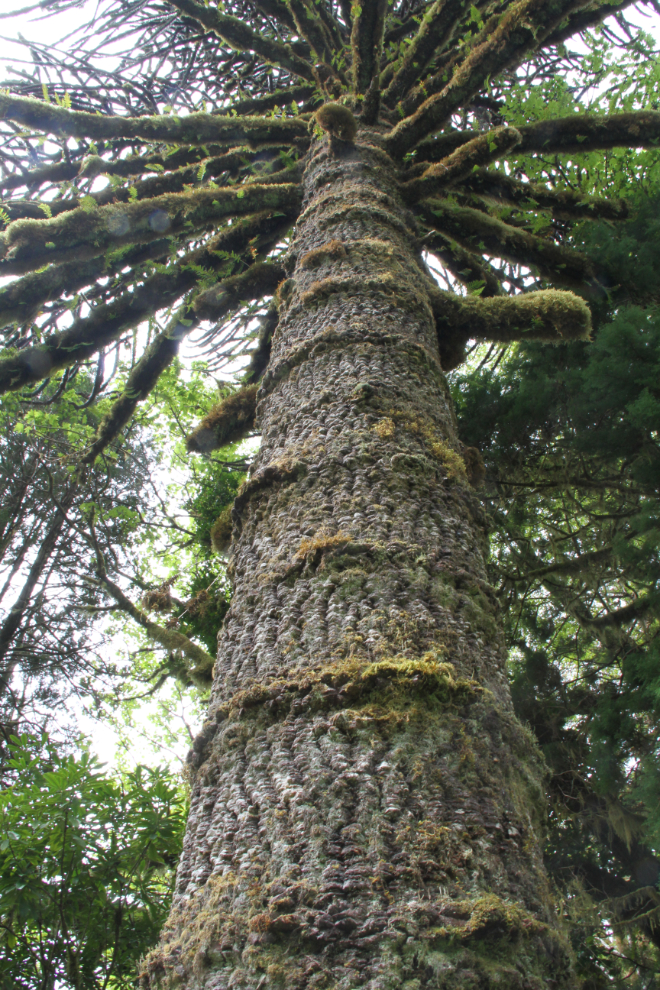
After going by many flowers, and larger plants ranging from bamboo to a Golden Irish Yew (some plants have identification labels), a trail leads from Bernt Ronning’s old house site to the lower field where much of the garden is. Ron and Julia’s seasonal home is also on the lower level.

Going through the photos and memories now, I’m still marvelling that the garden was created in the first place, and that two people are working hard decade after decade to keep it alive. On the lower level, we saw on Moe creating a wandering path through the grass with his riding mower. When he noticed us, he shut off the mower and offered to tell us the story of Ronning’s Garden. When I said that we had already talked to his wife, he returned to his labours.

Many of the original rhododendrons survived, and are stunningly beautiful now.I saw 2 varieties, this red one and a very showy pink, but I expect that there are more.

This is Ron and Julia Moe’s neat little cabin. An outhouse is out back, and a greenhouse off to the left.

The Giant Sequoia (Sequoiadendron gigantea) seems to be very happy at Ronning’s Garden.

Continuing on, the Creek Road took us back towards the upper level. The next photo shows the view back towards the cabin.

A century ago, living in a place like this required people to be both handy and inventive. I can’t figure out what this pair of machines laying beside the road did to make Berrnt’s life easier.

At 12:20, 40 minutes after leaving the car, we were back on the San Josef Wagon Road, walking towards the parking lot. There are some marvellous nurse logs along the old road, with century-old stumps nourishing new trees – this one is a gem.

on one while walking across the lawn barefoot as a child (which I recall doing fairly regularly), intrigue wasn’t my reaction to them!

Tucker was certainly intrigued! He didn’t know what to make of it. He was very curious, but also very nervous 🙂

Another great nurse log.

Back at the parking lot, thoroughly pleased with our visit to this remarkable and yet largely unknown historic site, we were all excited about getting to San Josef Bay.
